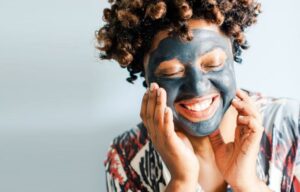This contagious fungal infection is commonly associated with locker rooms and public showers.
Athlete’s foot, or tinnitus, is a type of foot fungal infection. It is also called foot color worm (the medical name for dad is tenia).
According to the American College of Foot and Ankle Orthopedics and Medicine, infections are very common, and about 70% of people will have to find an athlete’s foot at some point in their lives.
At any given time, an athlete’s foot is found in 10% of the world’s population, according to a 2008 report in the journal Mycos.
What Causes Athlete’s Foot?
Many types of fungus, including yeast, can cause athlete’s foot.
In general, dermatophytes – fungi that require keratin for growth and cause skin diseases – cause foot infections.
In particular, Trichophthen rhobrum and T interdigital (formerly T. mentagraphites v. Interdigital) are the most common causes, according to Mykios. The epidermis flucosum is also a dominant species behind the athlete’s feet.
The fungus grows in the top layer of the skin (epidermis) and first enters the skin through small cracks.
Germs need moisture and heat to spread. Although tinnitus can affect any part of the foot, it usually affects the spaces between the toes.
If you have, you are more likely to get players’ feet:
A specific genetic predisposition
Allergy or dermatitis (dermatitis)
Weakened immune system
Poor blood circulation in the legs, such as diabetes or peripheral arterial disease
Signs and Symptoms of Athletes Foot
Tinnitus can cause a number of possible symptoms that affect the feet, including:
Red and itchy skin (itching)
Mild skin scaling, which may cover small parts (such as between the toes) or the entire sole of the toe.
Traumatic cracking (phishing) of the skin, usually the result of severe scaling
Fluid-filled blisters
Thickening of the soles of the feet
Fungal infections can also spread to the nails, causing them to become discolored, thickened or cracked.
Athlete’s foot can damage the skin and leave it open to prevent bacterial infections, such as cellulite.
Is Athlete’s Foot Contagious?
Athlete’s foot is contagious.
This infection is possible by touching the infected skin of a person who has the fungus, even if they do not have an active infection.
It is also spread by walking barefoot on damp, contaminated surfaces, such as lockers and public showers.
In addition, if you have a hygienic disorder, you can fit an athlete, such as:
Do not wash or dry your feet after exercising or after your feet get wet (including your sweat).
Shake, shoe and towel with other people
Use wet or shoes that are wet, or make your feet sweat a lot (thick socks and heavy shoes that do not breathe)
Reuse socks without washing them first (especially if you are crushed in them)
She is wearing shoes
Shoes fail to rotate between uses
Getting Rid of Athlete’s Foot
Athlete’s foot is highly treatable with non-prescription antifungal creams, gels, lotions, sprays and powders that contain the following active ingredients:
Cultrimazole
Miconazole
Oxyconazole
Ketoconazole
According to the Centers for Disease Control and Prevention (CDC), the treatment you choose should be used for 2 to 4 weeks.
In addition to using these medications, it is also important that:
Keep your feet clean and dry
Keep your feet as cool as possible by taking off your shoes, or wearing sandals
Avoid wearing heavy, closed shoes or thick socks
Rotate the shoes you wear, and do not reuse socks without first washing them
Avoid using swimming pools and public showers
If your infection does not improve, your doctor may prescribe strong antifungal pills such as terbinafine or atraconazole.
Home Remedies for Athlete’s Foot
For athletes’ feet, some people swear by home remedies such as tea tree oil or foot baths which are some herbal products.
However, according to the National Center for Biotechnology Information, there is no scientific consensus that these products work.
A 1992 study in the Australian Journal of Dermatology found that 10% tea tree oil cream was no better than placebo (passive cream) in healing athlete’s foot.
In contrast, though, a 2002 study in the same journal found that a 50% solution of tea tree oil could heal an athlete’s foot in about two-thirds of people.
It is important to note that researchers generally use highly clean and carefully tested compounds, and that tea tree oil products are not regulated in the same way as medicines.
In addition to tea tree oil, a mixture of garlic has been shown to have antifungal properties called jojoba, and some research suggests that it is effective against tinnitus.
But the compound has not been sold commercially, and it is unclear whether a topical solution containing crushed or raw garlic or a foot bath may be useful.
